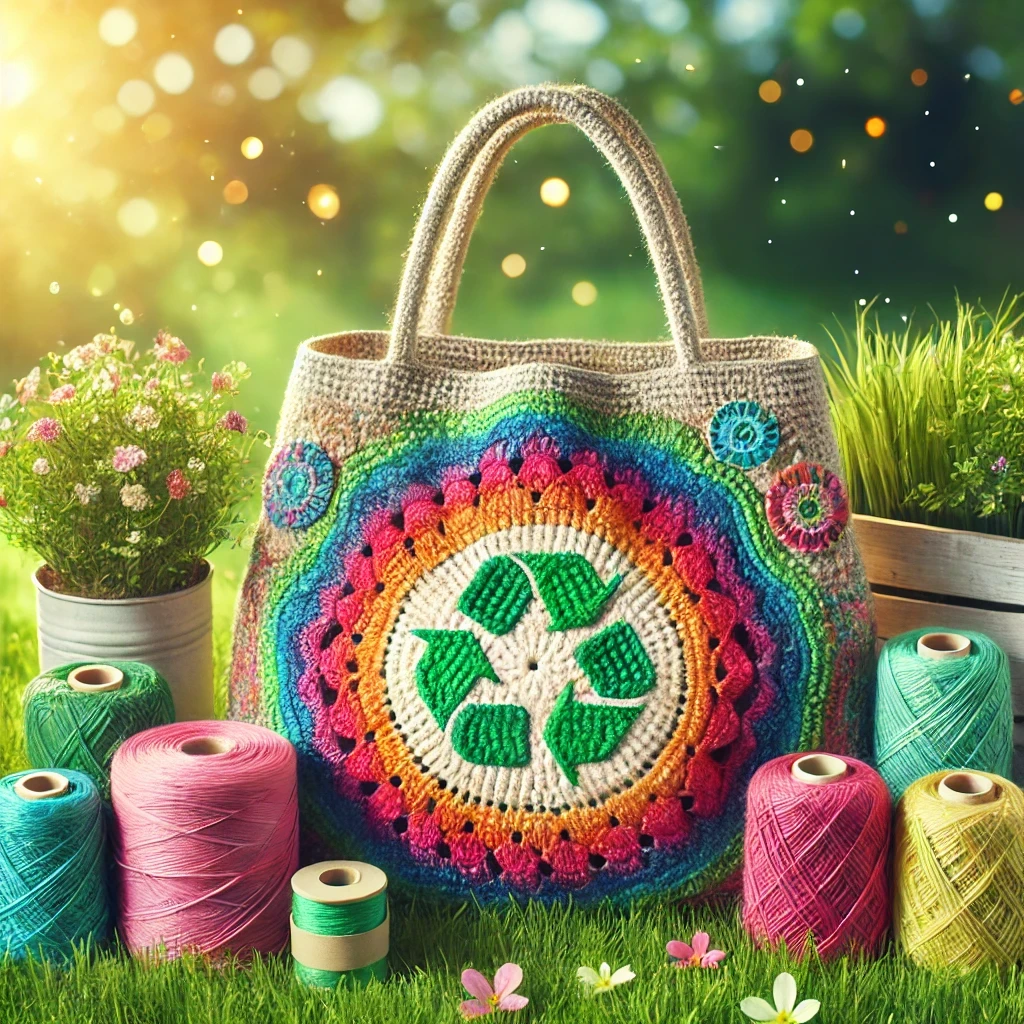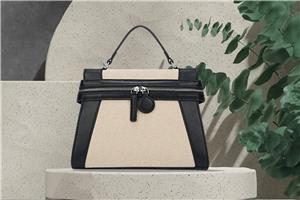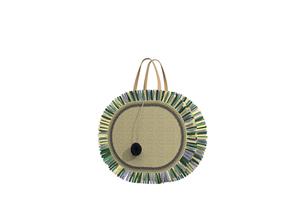Zero-Waste Meets Fashion: The Rise of Crochet Bags
Zero-Waste Meets Fashion: The Rise of Crochet Bags

The fashion industry is experiencing a transformative shift towards sustainability, with crochet bags emerging as a symbol of this eco-friendly revolution. These handmade accessories are gaining popularity not only for their unique esthetic appeal but also for their alignment with zero-waste design principles. Crochet bags represent a creative solution to the pressing issue of textile waste, offering a blend of style and environmental consciousness.
As consumers become more aware of the environmental impact of their purchases, crochet bags are stepping into the spotlight as durable and reusable alternatives to conventional fabric bags. This trend goes beyond mere fashion, tapping into the growing desire for sustainable living and waste reduction. By combining traditional craftsmanship with modern eco-sensibilities, crochet bags are reshaping our approach to accessories and challenging the fast fashion paradigm. Their rise highlights a broader movement towards more mindful consumption and the creative reuse of materials in the fashion world.
Understanding Zero-Waste Fashion
Zero-waste fashion design is a revolutionary approach that aims to eliminate textile waste from the garment creation process. This innovative concept challenges traditional fashion industry practices by designing out waste from the very beginning. The principles of zero-waste design focus on utilizing 100% of the fabric width, either through single or multiple garments, to create clothing that is both stylish and environmentally conscious.
Principles of zero-waste design
The core principle of zero-waste fashion is to create garments where all pattern pieces fit together like a jigsaw puzzle, leaving no fabric scraps behind. This approach requires designers to simultaneously visualize the garment in 3D and as a flat pattern, using an iterative process to achieve esthetically pleasing results while ensuring all fabric pieces are utilized. By combining the roles of fashion designer, textile designer, patternmaker, and fashion technologist, zero-waste practitioners can make complex decisions at the speed of thought, achieving a dynamic that a team of individual specialists could not replicate.
Zero-waste design often leads to the discovery of new silhouettes and innovative patterns that might not have been conceived through traditional sketching methods. This constraint-driven creativity forces designers to think outside the box and explore unconventional approaches to garment construction. The result is a unique esthetic that challenges conventional fashion norms while promoting sustainability.
How crochet aligns with zero-waste philosophy
Crochet, as a craft, naturally aligns with the zero-waste philosophy due to its inherent characteristics. When creating a crochet bag, for example, the process involves using continuous yarn to form the desired shape, leaving minimal to no waste. This technique allows crafters to have complete control over the design process, enabling them to envision and create items without the need to purchase ready-made products from stores.
The versatility of crochet allows for the creation of various items, from bags and accessories to home decor, all while adhering to zero-waste principles. Crocheters can easily adjust their designs on the go, ensuring that every bit of yarn is utilized effectively. This flexibility not only reduces waste but also promotes a more mindful approach to consumption and production.
Reducing textile waste through crochet
Crochet plays a significant role in reducing textile waste by offering a sustainable alternative to mass-produced items. By creating crochet bags and other accessories, crafters can help minimize the demand for disposable plastic bags and contribute to waste reduction efforts. The durability of crocheted items also ensures their longevity, further reducing the need for frequent replacements and, consequently, less waste generation.
Moreover, crochet allows for the creative reuse of materials that might otherwise end up in landfills. Crafters can repurpose old t-shirts, fabric scraps, or even plastic bags by cutting them into strips and using them as yarn for crochet projects. This innovative approach not only reduces textile waste but also gives new life to materials that would have been discarded.
The zero-waste philosophy in crochet extends beyond the creation process. When a crocheted item reaches the end of its lifecycle, it can be easily unraveled and the yarn repurposed for new projects, creating a closed-loop system that aligns perfectly with circular economy principles.
By embracing crochet as a zero-waste craft, individuals can contribute to sustainability efforts while expressing their creativity. The rise of crochet bags and other handmade accessories represents a shift towards more conscious consumption and a growing appreciation for durable, reusable alternatives to disposable products.
The Fashion Appeal of Crochet Bags
Crochet bags have gained significant popularity in the fashion world, captivating style enthusiasts with their unique, handmade appeal. These accessories stand out as pieces of art, showcasing intricate patterns and textures that complement various outfits. The charm of crochet bags lies in their handcrafted nature, with each bag carefully created over hours, resulting in a product that is not only beautiful but also holds sentimental value.
Unique textures and patterns
The versatility of crochet allows for the creation of a wide range of designs, from simple totes to elaborate evening clutches. This variety ensures that there's a crochet bag for every occasion, whether it's a casual bag for daily use or a stylish accessory for a special event. The unique blend of style and functionality makes crochet bags a popular choice for various occasions, offering options to suit different needs.
One of the most appealing aspects of crochet bags is the ability to customize and personalize them. With a variety of crochet patterns and endless color combinations, consumers can find or create a design that reflects their individual style and personality. This customization extends to size as well, with options ranging from small crossbody bags for everyday use to larger totes perfect for beach outings or farmers market trips.
Seasonal trends and timeless designs
Crochet bags have emerged as a significant trend in recent years, aligning with the growing desire for sustainable and unique fashion pieces. The inherent strength and durability of crochet stitching ensure that these bags can withstand daily use while maintaining their stylish appearance. This durability contributes to waste reduction efforts, as crochet bags serve as excellent alternatives to disposable plastic bags.
The fashion appeal of crochet bags extends beyond their eco-friendly nature. They carry a sense of nostalgia, reminiscent of a bygone era when craftsmanship and personal touch were highly valued. This vintage allure, coupled with their handmade nature, creates a unique emotional connection with consumers. The timeless quality of crochet bags allows them to transcend seasonal trends, making them a versatile addition to any wardrobe.
Recent fashion trends have seen a resurgence of crochet in high-end collections. Luxury brands like Fendi, Bottega Veneta, and Valentino have showcased crochet in their collections, elevating the status of this traditional craft in the fashion world. This endorsement from high-fashion designers has further boosted the popularity of crochet bags among style-conscious consumers.
Celebrity endorsements and influencer impact
The influence of celebrities and social media influencers has played a significant role in the rise of crochet bags. Fashion-forward celebrities and influential personalities have been spotted flaunting crochet bags, capturing the attention of their massive followings. This exposure has helped to position crochet bags as must-have accessories for the fashion-savvy.
Young crocheters are putting their own spin on the craft, creating items that are both stylish and modern. This contemporary take on crochet has helped it gain a foothold in popular culture, making it a favorite among younger generations. The association of crochet bags with a trendy, 'boho-chic' style has particularly resonated with younger consumers looking for unique ways to express their individuality.
As crochet bags continue to gain popularity, they represent more than just a fashion statement. They embody a shift towards more conscious consumption, supporting sustainable practices and artisanal craftsmanship. The rise of crochet bags in the fashion world serves as a testament to the enduring appeal of handmade, personalized accessories in an era of mass production.
DIY Crochet Bags: A Sustainable Hobby
Creating crochet bags is not only a fun and rewarding hobby but also a sustainable way to contribute to waste reduction efforts. By crafting your own bags, you can reduce reliance on disposable options and embrace a more eco-friendly lifestyle. This section explores how to get started with crochet, source sustainable materials, and upcycle old fabrics into beautiful, functional bags.
Getting started with crochet
For beginners, crochet is an accessible craft that requires minimal supplies to start. To embark on your crochet journey, you'll need a few basic items: yarn, a crochet hook, scissors, and a tapestry needle. As you progress, you may want to add a measuring tape, stitch markers, and row counters to your toolkit.
Crochet utilizes five basic stitches: chain, single crochet, half-double crochet, double crochet, and slip stitch. Mastering these fundamental techniques will set you on the path to creating a wide variety of projects, including bags. Many beginners find that starting with a simple tote bag pattern is an excellent way to practice these stitches while creating a useful item.
When selecting a pattern for your first crochet bag, look for one that uses basic stitches and simple construction. Some patterns, like the Easy Crochet Bag, use only half double crochet stitches and consist of two rectangles sewn together, making them ideal for newcomers to the craft.
Sourcing eco-friendly materials
Choosing sustainable materials is crucial for creating environmentally friendly crochet bags. Opt for yarns made from natural, biodegradable fibers or recycled materials to minimize your environmental impact. Some excellent eco-friendly options include:
Organic cotton: This natural fiber is grown without harmful pesticides or chemicals, making it a safer choice for both crafters and the environment.
Recycled cotton: Made from post-consumer waste, recycled cotton yarn helps reduce textile waste and conserves water during production.
Plant-based options: Yarns made from bamboo or hemp are biodegradable and require minimal water and pesticides to grow.
Recycled fibers: These yarns are created from various sources, including old clothing, textile scraps, and even plastic bottles, helping to minimize waste and reduce strain on natural resources.
When selecting yarn for your crochet bag, consider factors such as durability and stretch. Cotton yarn, especially recycled or organic varieties, is an excellent choice for bags as it's strong and has minimal stretch, helping your bag maintain its shape over time.
Look for certifications like Global Organic Textile Standard (GOTS) or OEKO-TEX? when purchasing yarn to ensure it meets high environmental and social standards. Some sustainable yarn options include GANXXET's Recycled Cotton, PaintBox Recycled Cotton, and Ice Yarns' Organic Baby Cotton.
Upcycling old fabrics into new bags
Upcycling is an innovative way to create crochet bags while giving new life to old textiles. This approach not only reduces waste but also allows for unique, personalized designs. Here are some tips for upcycling fabrics into crochet bags:
Source materials: Look for old t-shirts, dresses, or other clothing items that are no longer wearable. These can be found in your own closet, thrift stores, or even from discarded clothing left on the street.
Prepare the fabric: Cut the fabric into continuous strips, creating a yarn-like material. The width of the strips can vary depending on the desired thickness of your "yarn".
Consider fabric weight: Different fabrics will produce varying results. For example, t-shirt material may be thinner than regular yarn, so you might need to adjust your crochet technique or use multiple strands together for added strength.
Get creative with patterns: Upcycled fabric strips can create interesting color combinations and textures. Experiment with different patterns and color arrangements to make your bag truly unique.
By embracing DIY crochet bags as a sustainable hobby, you can contribute to waste reduction efforts while expressing your creativity. Whether you choose to work with eco-friendly yarns or upcycle old fabrics, each bag you create represents a step towards a more sustainable future in fashion and everyday life.
Conclusion
The rise of crochet bags in the fashion world has sparked a revolution in sustainable accessories. These handmade items have an impact on both style and environmental consciousness, offering a unique blend of artistry and eco-friendliness. Crochet bags are more than just a passing trend; they represent a shift towards mindful consumption and creative reuse of materials in the fashion industry.
As we move forward, crochet bags continue to gain popularity, embodying the principles of zero-waste design and sustainable fashion. Their appeal goes beyond esthetics, tapping into the growing desire for durable, personalized accessories that tell a story. Whether crafted by skilled artisans or made at home as a DIY project, crochet bags stand as a testament to the enduring charm of handmade items in our modern world.




